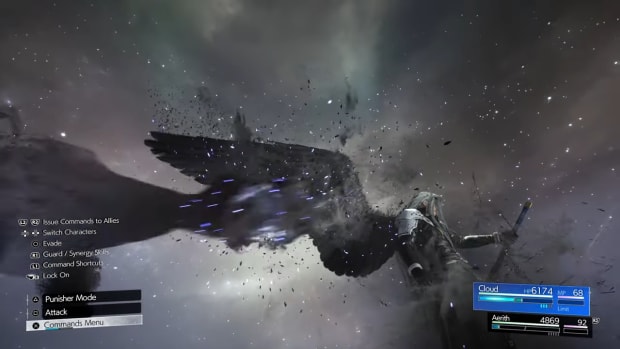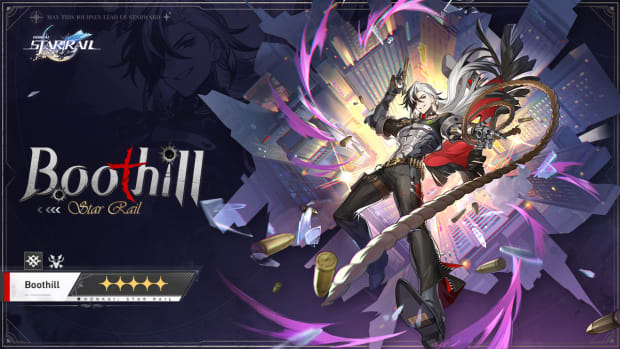Immortals of Aveum review: a step towards something magical
What happens when you get a bunch of former Call of Duty and Dead Space developers together, give them a big bag of money, and tell them to make something new? You get Immortals of Aveum, a spell-slinging first-person shooter that genuinely tries to do something different. Different isn’t always good, though, and Aveum stumbles almost as often as it succeeds. But if you’re willing to lower your expectations, you might just find something magical.
Our introduction to the world of Aveum comes through the lens of Jak, a street rat living in the understreets of a major city that sits atop a bottomless pit. He and his found family of fellow urchins and thieves make a living by stealing from the rich and powerful, the upper echelon of society with more money than sense.
Jak and his little family are what’s known in the world of Aveum as Lightless, a class of people who have little to no magical ability. Lightless are forced to throw their bodies on the pile of the eternal battle for magical control, the Everwar, and if they happen to survive, are left to live a life of manual labor serving the uppers. That’s a big “if” though — it’s called the Everwar for a reason, it never ends, and there’s never any success.
That’s a solid premise for a game, touching on some nuanced themes and setting up some great commentary on inequality and class warfare. Unfortunately, that entire premise gets abandoned about half an hour into the game, with an invasion causing Jak to awaken his magical powers and subsequently join the army to fight in the war of his own volition.
It’s such a shame, too, because I was enjoying those early-game vibes. Wandering the haphazard underbelly of a magical metropolis, jumping from rooftops and running from cops, all with the background themes of class inequality and found family? It ticked just about every box. And then suddenly there’s a five-year timeskip, and it’s all about contributing to the war effort in picturesque high fantasy realms. It’s a bit of a dull leap to make, in all honesty, and though it does circle back around on some of those themes in the late-game, by that stage it’s far too late to matter.
The story plays out exactly as you’d expect, following a path that’s telegraphed early on and doesn’t change much from there. It’s not boring — truly, there are plenty of exciting moments — but it is predictable, and what are clearly supposed to be twists don’t quite land the way they’re supposed to.
It doesn’t help much that Jak is insufferable, looking, acting, and speaking like every self-obsessed twink that’s sent me unsolicited pictures out of the blue on Grindr. He’s a frustrating character who eventually crosses over into charming — as much as he annoyed me in Immortals of Aveum’s 20-hour runtime, I did come to enjoy his comic book quips and jabs eventually.
It’s got a solid cast of side-characters though, with the overly-friendly Devyn providing a bit of comic relief, the hard-headed Zendara dishing out tough love, and the electrifying performance of Gina Torres as Kirkan, the leader of the army and Jak’s personal mentor. All of these characters are written well, performed even better, and would be the best part of the game if it weren’t for the game’s tendency to just shove characters off-screen the second they’re not directly contributing to the story.
Instead, the best part of Immortals of Aveum is its solid gameplay, which tries its very hardest to dress up classic FPS gameplay in a new set of robes. There are three basic weapon types, called spells but mechanically indistinguishable from guns in any other shooter. Blue magic offers a weapon somewhere between a long-range rifle and a handgun, red magic is effectively a shotgun, and green magic is an automatic assault rifle.
On the surface this seems boring, but they are touched up with magical flourishes that make them a little more interesting than they appear at first glance. For example, green magic fires a bunch of weak projectiles at a rapid pace, but those projectiles also home in on enemies. There aren’t any hitscan weapons either — with every spell you sling, you’ll see the particles fly towards your enemies, grounding the experience and lending to the feeling that you’re casting spells, not firing weapons.
The combat is expanded even further through some clever support spells that make you feel like a powerful wizard. Being able to pull an enemy towards you with a magical whip and then blast them in the face with your shotgun-like red spell is a combat loop that never gets old. I was particularly fond of the magic globules you can toss at enemies to slow them down, making it easier to get hits on them with some of the more precise weapons. None of these are particularly new to FPS games, but the way they’re implemented helps sell the experience.
Unfortunately, there are downsides to the combat too. In the early-game, when you’re fighting low-level chuds that go down in a few hits, you feel powerful and combat is exciting. The more you progress though, the longer enemies take to kill, leading to a feeling of actually getting weaker over time. Granted, some of these enemies do require a little bit more strategy and utilizing more of your skill set, but a lot of them are little more than damage sponges.
There’s also a bit of a problem with how colors factor into the experience too. Some enemies are weaker to particular colors of magic, and others need to be interrupted with specific colors or spells. As a colorblind person, this kinda sucked, and I spent an unfortunate amount of time in some battles just cycling through my spells to find the one that did the most damage or stopped the enemies from healing or charging. There are colorblind settings, but they’re the worst kind, consisting of a few filters that ruin the game’s (very good) art direction.

Pulling enemies towards you and blasting them with red magic is deeply satisfying.
EA Originals / GLHF
That aside though, I still found a lot of enjoyment in moment-to-moment combat in Immortals of Aveum. It feels like there’s a lot of tweaking to be done, evening out some of the more thorny parts of the experience and adjusting the curve to make it feel like you’re getting more powerful over time. There’s a great underlying combat system here, it just needs more variety in spells and enemies, and less of a focus on color-matching.
If there’s a future for the world of Aveum, I could see combat maturing into something spectacular and unique. That goes for the whole game, really — it feels like a fledgling effort, a lot of great ideas executed almost well. The world is a little more open than it needs to be, and a little too linear for the world it takes place in. The story feels like it doesn’t want to commit too hard to anything, and the characters don’t stick around long enough to become beloved.
Immortals of Aveum is a solid first effort from a brand-new studio. It’s not without its troubles, of which there are many, and it absolutely does not land half of the concepts it’s trying to pull off, but there’s a glimmer of a great game in there. If nothing else, it’s worth playing just to see somebody do something different in a triple-A space that so rarely innovates.
Score: 7/10
- Story and narrative: 6/10
- Visuals: 9/10
- Mechanics and systems: 8/10
- Accessibility: 4/10
Version tested: PS5
Immortals of Aveum technical breakdown
On the PS5, Immortals of Aveum is a fairly solid experience, sticking to a solid 60fps most of the time, and only dropping in situations where it doesn’t really matter all that much. Visually it’s a fairly stunning game, with only the somewhat generic art direction holding it back from making the most of everything Unreal Engine 5 has to offer.
I didn’t experience any bugs, glitches, or anything that felt wrong, though sometimes the positioning on interactive prompts was needlessly finicky. Load times were quick and snappy, which is good given each area in the game is sectioned off with load screens separating them.





